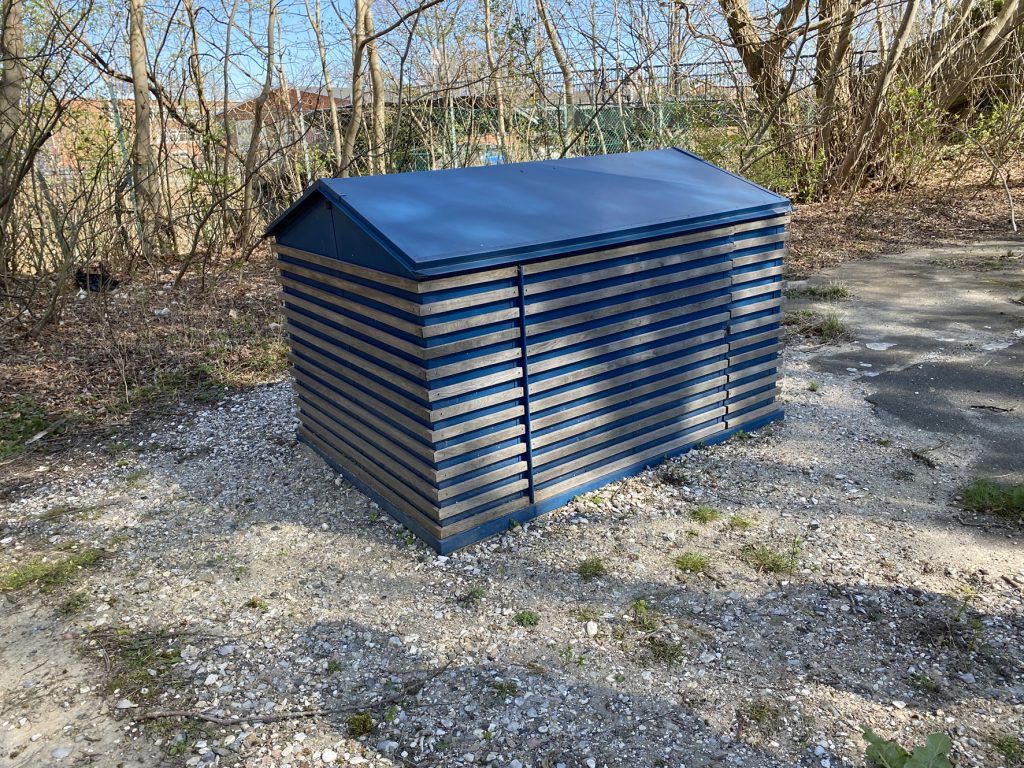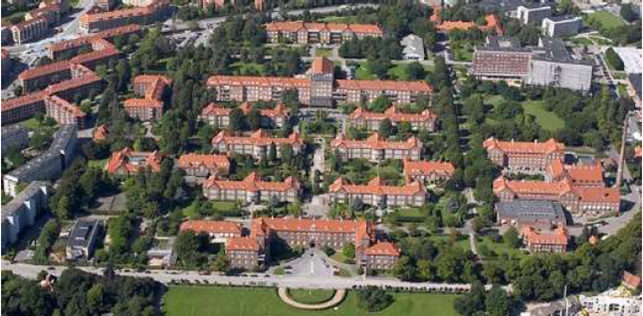
ATES technology for Bispebjerg Hospital.
ATES as Smart Energy solution
A widespread solution for cooling today, both locally and for district cooling, is the use of electric compressors refrigeration systems, which in many cases are placed on the roof and where the heat produced is simply thrown out to the surroundings.
We need to get away from this solution, and here the use of groundwater cooling is an obvious alternative, which at the same time has the advantage that the produced heat is collected in aquifers in the subsoil by so-called reinjection, so that 80% of the heat content can be utilized in heat pumps during the heating season. Such plants are called ATES systems, where ATES stands for Aquifer Thermal Energy Storage.
Already at the establishment in December 2018, the ATES system for Bispebjerg Hospital was an iconic project that really illustrated what groundwater heating and cooling systems can contribute in practice in combination with heat pumps.
Very significant energy savings are achieved compared to ordinary cooling and district heating.
This is described in more detail in 2 Enopsol articles, which review the ATES plant in detail.
Introduction to a number of issues that are important in relation to ATES systems
Groundwater wells for ATES plants that are used for groundwater-based cooling and heating must in any case be approved by the authorities, whose task is to ensure that a negative impact on groundwater in areas with special drinking water interests is avoided. As groundwater is not directly affected by the heat exchangers it is sent through before being returned via another groundwater well, the only factor that can cause concern is that there is a major temperature change in the groundwater. Normally, there will be a requirement not to exceed a temperature level of 20°C in the groundwater, where the normal temperature is typically 8-10°C in Denmark.
The normal way to get accept once for the use of ATES plants is to use simulation models to prove that a so-called annual thermal balance can be ensured for the groundwater. Here, the combination of groundwater cooling and the use of groundwater heat pumps to supply heat during the heating season is an obvious solution that has proven its value in many ATES projects in Denmark and other countries.
And in this connection, the ratio would ideally be that even though groundwater cooling in the summer gives a temperature increase, a corresponding cooling with heat pumps during the heating season will mean that you reach the normal groundwater temperature of 8-10 °C when the year has passed.
It is very obvious to use the groundwater for cooling purposes, if possible, because you both save about 90% of energy for cooling during the summer months and avoid noisy compressor systems on the roof, while ensuring a heating of the groundwater.
If there are no cooling needs to cover, it may be possible to use thermal solar collectors to heat the groundwater during the summer period, so that during the heating season you still have the opportunity to achieve a very efficient heat pump operation, when using the heated groundwater.
In any case, it is crucial that the installations you link the ATES system with will work as intended. This means that the cooling system in the associated buildings really ensures adequate heating of the cooling water and that the heating systems to which the heat pumps must supply heat also run with a good low temperature operation.
Within ATES systems, as mentioned, there is a tradition of limiting the warming of groundwater to around 25°C. In a project carried out under dispensation for the Danish Nature Agency by DTU Environment, Krüger and Enopsol, it has been shown that heating the groundwater to an average of 30°C can be done without problems. If in the future it becomes possible to store at 30°C on average compared to 20°C on average today, profitability can be significantly improved, as fewer groundwater wells can be used to achieve the same energy conversion. Finally, we must also touch on issues relating to heat loss from the ATES heat storage. Experience shows that even if the groundwater moves, the heat will not move further away than it will be possible to get most of it back after storage. As a starting point, you can expect to be able to recover approx. 80% of the heat energy stored in the summertime in the following winter time
Peder Vejsig Pedersen january 2020

